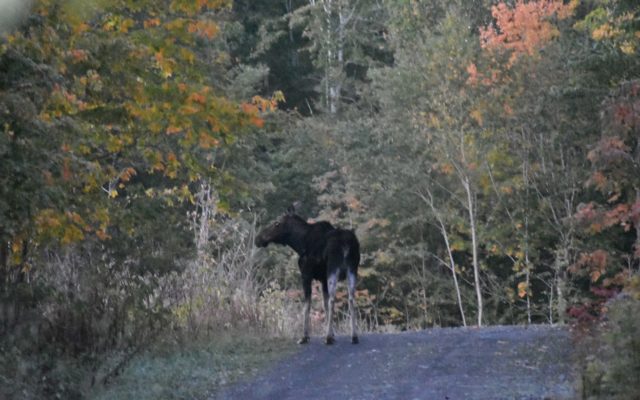
Biologists propose 11 percent increase in moose permits for this year
Citing a continuing goal of reducing moose density in certain areas in order to cut down the effect of winter ticks on the herd, Maine biologists have proposed increasing the number of available moose permits this year by 11 percent over last year, up to 3,135.
Lee Kantar, the state moose biologist for the Maine Department of Inland Fisheries and Wildlife, said that although the state’s moose population has decreased from its historic high in the late 1990s, it’s still high enough in key areas that winter ticks are able to find hosts to live on.
Those ticks take the largest toll on moose calves, sometimes killing more than 50 percent of the calves in a given area. The tick load can reach the thousands on a single animal, and those infested moose aren’t able to replace the blood they’re losing fast enough to survive.
Kantar said that many people think the state’s goal is simply to have as many moose as possible, and getting folks to buy in to the fact that having fewer of the animals can actually lead to a healthier herd can be a challenge.
“[We need people to] understand the winter tick and how it impacts moose, and try to get an understanding that we actually need to somehow get to the point where we can affect change so that moose populations in the core range are not as dense as they are now, even now, where people see less moose [than they used to],” Kantar said.
The proposal has gone through the first stage of a three-stage rulemaking process in front of the Maine Department of Inland Fisheries and Wildlife’s advisory council. The council met last week, and meets monthly. The number of permits must be finalized before the annual moose permit lottery, which is scheduled to be held in Jackman on June 13.
The last time the state issued more than 3,000 moose permits was in 2014 (3,095). The modern record for most moose permits was set in 2013, when 4,110 permits were issued.
Maine’s modern moose hunt began on an experimental basis in 1980, when 700 permits were issued. After a one-year hiatus to study the issue, the hunt resumed in 1982 and has been held annually ever since.
Up until 2018, biologists were typically encouraged to increase the moose herd in many parts of the state. A new big game management plan that went into effect that year switched the focus toward developing a healthy moose herd, with the understanding that in some areas, that might involve having fewer moose on the landscape than had previously been the case.
Kantar said a decade of research, including a seven-year survival study, has given the state’s biologists data that has been critical in developing new management strategies.
Kantar said the additional permits this year come from Wildlife Management Districts 1 through 6, which make up the northern tier of the state, which has plenty of moose habitat and a lot of moose. In all, 2,390 of the 3,135 permits — 76 percent of the statewide total — are proposed to be allotted in those six WMDs.
— Sept. 28-Oct. 3 in Wildlife Management Districts 1-6, 10, 11, 18, 19 and 27/28, with 936 bull permits.
— Oct. 12-17, in WMDs 1-14, 17, 18, 19 and 27/28, with 1,414 bull permits.
— Oct. 26-31 in WMDs 1-6 with 745 cow permits.
— Nov. 2-28 in WMDs 15 and 16, with 40 any-moose permits.
The deadline to register for the permit lottery is May 14 at 11:59 p.m.